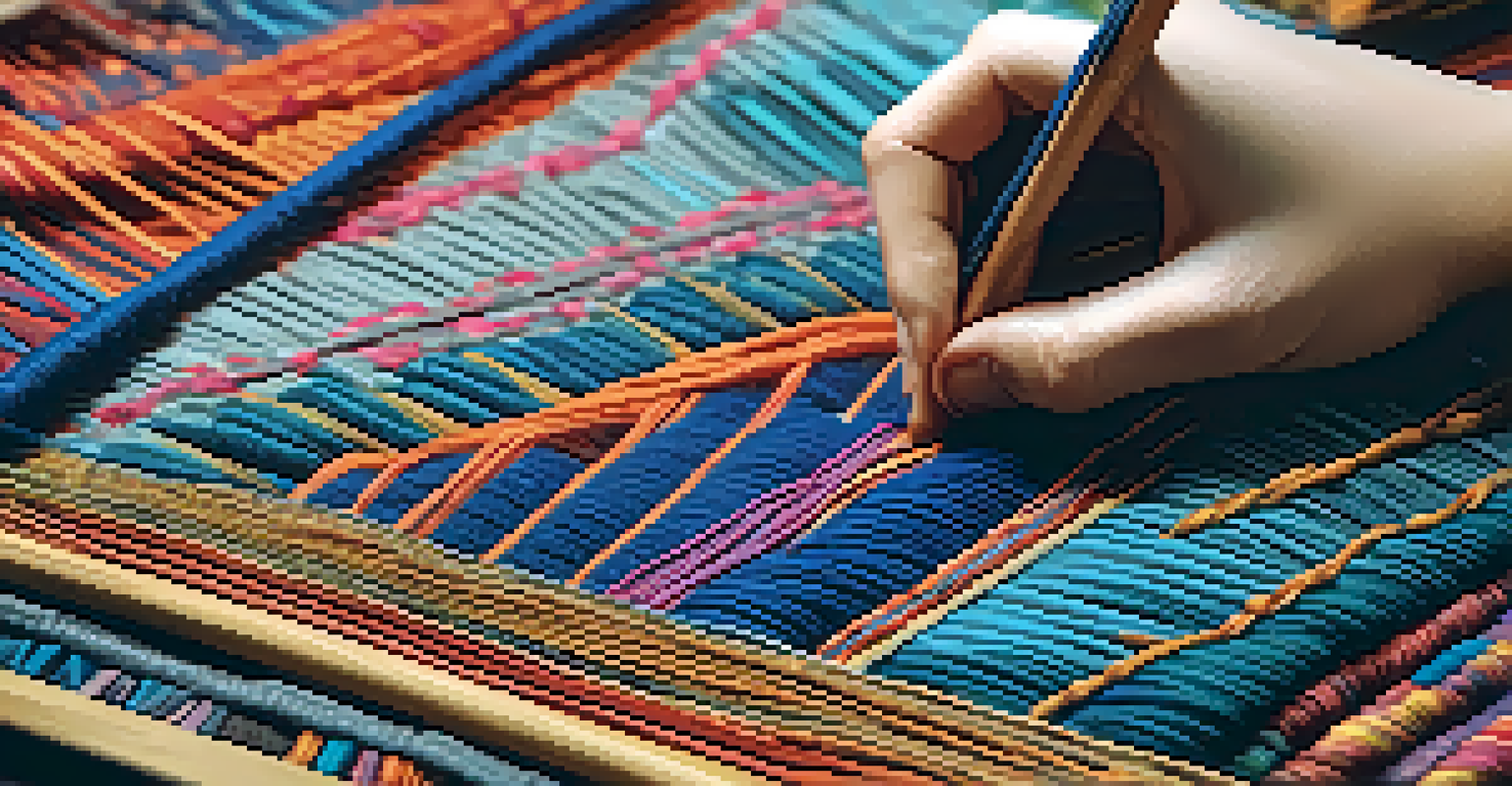Cultural Sensitivity in Fashion Design: A Necessary Discussion

Understanding Cultural Sensitivity in Fashion
Cultural sensitivity in fashion refers to the awareness and respect for different cultures when designing clothing. It goes beyond mere aesthetics, urging designers to acknowledge the significance behind cultural symbols and styles. For instance, a traditional garment from one culture may hold deep spiritual meaning, which should be respected and understood before being used in a modern collection.
Fashion is about more than just clothes; it's about the stories we tell and the cultures we respect.
Fashion is a global industry, and the blending of cultures can lead to innovative designs. However, it’s crucial to approach this blending with care to avoid cultural appropriation, where elements of a culture are used without understanding or respect. For example, using Native American headdresses as fashion accessories can be seen as disrespectful, as these items are sacred and carry deep cultural significance.
In essence, understanding cultural sensitivity is vital for creating designs that honor and celebrate diversity. It encourages designers to engage in meaningful dialogue with the cultures they draw inspiration from, ensuring their work is both respectful and inclusive.
The Impact of Cultural Appropriation
Cultural appropriation occurs when elements of one culture are adopted by another, often without permission or understanding. This practice can lead to significant backlash, as it may perpetuate stereotypes or diminish the original culture's value. For instance, a high-fashion brand using traditional African prints without acknowledging their origins can trigger outrage among those who hold these designs dear.

The impact of cultural appropriation is not just social; it can also affect the brand’s reputation. Consumers today are more informed and vocal about their values, pushing brands to be more accountable. A brand that fails to respect cultural origins may find itself facing boycotts or negative press, which can have lasting effects on its bottom line.
Cultural Sensitivity is Crucial
Designers must understand and respect the significance of cultural symbols to create inclusive fashion.
Therefore, it’s essential for designers to carefully consider the implications of their work. By prioritizing cultural sensitivity, they can foster a more inclusive industry that celebrates rather than exploits diverse traditions.
Learning from Cultural Exchange
Cultural exchange is a positive way to incorporate diverse influences into fashion. Unlike appropriation, it involves mutual respect and understanding, allowing cultures to share their traditions and practices. For example, collaborations between designers from different backgrounds can yield creative solutions that benefit all parties involved.
To create is to engage with the world, and that means being aware of the cultures we draw from.
One notable example is the collaboration between Western designers and Indigenous artists, where both parties work together to create pieces that reflect their combined heritage. This approach not only honors the original culture but also educates consumers about its history and significance. It's a win-win situation that highlights the beauty of diversity in fashion.
By embracing cultural exchange, designers can create pieces that resonate on multiple levels. This not only enriches their collections but also fosters a sense of community and appreciation among different cultures.
The Role of Education in Fashion Design
Education plays a pivotal role in fostering cultural sensitivity among fashion designers. Schools and institutions can incorporate courses that focus on cultural awareness, helping aspiring designers understand the histories and meanings behind various styles. This foundational knowledge is essential for creating respectful and innovative designs.
Workshops and seminars featuring guest speakers from diverse backgrounds can also enhance understanding. These sessions provide firsthand insights into the significance of certain designs, helping students grasp why certain symbols should be treated with care. Real-world experiences can be invaluable in shaping a designer's perspective.
Cultural Appropriation Hurts Brands
Using cultural elements without understanding can lead to backlash and damage a brand's reputation.
Ultimately, a well-rounded education that prioritizes cultural sensitivity equips future designers to make informed choices. By emphasizing the importance of respect and understanding, the fashion industry can evolve into a more inclusive space.
Recognizing the Voices of Indigenous Designers
Indigenous designers play a crucial role in promoting cultural sensitivity in fashion. By sharing their stories and perspectives, they help to educate others about their cultural heritage and the importance of authenticity. Their work is often rooted in deep traditions, offering valuable insights that can inform the broader fashion community.
Supporting Indigenous designers not only empowers these creators but also encourages a more ethical approach to fashion. When brands collaborate with Indigenous artists, they not only provide financial support but also help in amplifying voices that have been historically marginalized. This collaboration can lead to innovative designs that reflect genuine cultural narratives.
By prioritizing Indigenous designers in the fashion industry, we can create a more equitable landscape. It encourages a shift from appropriation to appreciation, allowing unique cultural stories to shine through.
Practical Steps for Designers to Ensure Sensitivity
Designers can take several practical steps to ensure cultural sensitivity in their work. First and foremost, thorough research is essential. Understanding the history, significance, and meanings behind certain cultural elements is crucial before incorporating them into designs. This prevents misrepresentation and fosters a deeper connection to the work.
Secondly, engaging with communities directly can provide invaluable insights. Collaborating with cultural representatives can help designers gain a more authentic perspective, ensuring their work honors the culture appropriately. This can involve interviews, workshops, or co-designing pieces that reflect the community's values.
Education Enhances Cultural Awareness
Incorporating cultural sensitivity into fashion education equips designers to make informed and respectful choices.
Lastly, transparency is key. Designers should be open about their sources of inspiration and the process behind their creations. By acknowledging the cultures that influence their work, they can build trust and foster a respectful dialogue with consumers.
The Future of Fashion: A Call for Inclusivity
As the fashion industry evolves, the call for inclusivity becomes louder. Designers are increasingly recognizing the importance of cultural sensitivity and the need to advocate for diverse voices. This shift is not just a trend; it's a necessary step toward creating a more equitable industry.
The future of fashion lies in collaboration and understanding. By embracing cultural diversity and encouraging dialogue, we can create an environment where all voices are heard and respected. This not only enriches fashion but also fosters a sense of community among designers and consumers alike.

Ultimately, the journey toward cultural sensitivity in fashion is ongoing. It's essential for all industry players to commit to continuous learning and growth, ensuring that every design honors the rich tapestry of cultures that inspire them.